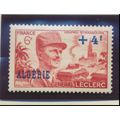Garrett 1920 Special Showmans Tractor Fakenham 1970s
- Condition : Used
- Dispatch : 2 Days
- Brand : None
- ID# : 34349334
- Quantity : 1 item
- Views : 345
- Location : United Kingdom

- Seller : justthebook (+1703)
- Barcode : None
- Start : Sun 21 Nov 2010 01:51:03 (BST)
- Close : Run Until Sold
- Remain : Run Until Sold
More Listings from This Seller view all
Seller's Description
- Postcard
- Picture / Image: 1920 Garret Special Showmans' Tractor - 'Medina' preserved by Mr GT Cushings Farm at Thursford Village near Fakenham, Norfolk
- Publisher: Ernest Joyce & Co.
- Postally used: no
- Stamp: n/a
- Postmark(s): n/a
- Sent to: n/a
- Notes & Key words:
------------------------------------------------
Postage & Packing:
UK (incl. IOM, CI & BFPO): 99p
Europe: £1.60
Rest of world (inc. USA etc): £2.75
No additional charges for more than one postcard. You can buy as many postcards from me as you like and you will just pay the fee above once. (If buying postcards with other things such as books, please contact or wait for invoice before paying).
Payment Methods:
UK - PayPal, Cheque (from UK bank) or postal order
Outside UK: PayPal or Google Checkout ONLY please. NO non-UK currency checks or money orders (sorry).
NOTE: All postcards are sent in brand new stiffened envelopes which I have bought for the task. These are specially made to protect postcards and you may be able to re-use them. In addition there are other costs to sending so the above charge is not just for the stamp!
----------------------------------------------
Text from the free encyclopedia WIKIPEDIA may appear below to give a little background information:
*************
A traction engine is a self-propelled steam engine used to move heavy loads on roads, plough ground or to provide power at a chosen location. The name derives from the Latin tractus, meaning 'drawn', since the prime function of any traction engine is to draw a load behind it. They are sometimes called road locomotives to distinguish them from (railway) steam locomotives – that is, steam engines that run on rails.
Traction engines tend to be large, robust and powerful, but heavy, slow, and have poor manoeuvrability. Nevertheless, they revolutionized agriculture and road haulage at a time when the only alternative prime mover was the draught horse.
They became popular in industrialised countries from around 1850, when the first self-propelled portable steam engines for agricultural use were developed. Production continued well into the early part of the 20th century, when competition from internal combustion engine -powered tractors saw them fall out of favour, although some continued in commercial use in the UK into the 1950s and later. All types of traction engines have now been superseded, in commercial use. However, several thousand examples have been preserved worldwide, many in working order. Steam fairs are held throughout the year in the UK, and in other countries, where visitors can experience working traction engines at close hand.
Traction engines were cumbersome and ill-suited to crossing soft or heavy ground so their agricultural use was usually either "in the belt" – powering farm machinery by means of a continuous leather belt driven by the flywheel – or in pairs, dragging an implement on a cable from one side of a field to another. However, where soil conditions permitted, direct hauling of implements ("off the drawbar") was preferred – in the U.S., this led to the divergent development of the steam tractor.
In Great Britain, the term steam tractor is more usually applied to the smallest models of traction engine – typically those weighing seven tons or less – used for hauling small loads on public roads. Although known as light steam tractors, these engines are generally just smaller versions of the road locomotive.
They were popular in the timber trade in the UK, although variations were also designed for general light road haulage and showman's use.
The most popular of these designs was probably the Garrett 4CD, meaning 4 nominal horse power Compound. [8]
Richard Garrett & Sons was a manufacturer of agricultural machinery, steam engines and trolleybuses. Their factory was Leiston Works, in Leiston, Suffolk, United Kingdom.
The company was active under its original ownership between 1778 and 1932. The company joined the Agricultural & General Engineers (AGE) combine in 1919, and the combine entered receivership in 1932.
The company was purchased by Beyer Peacock in 1932 after the collapse of AGE. The business continued as Richard Garrett Engineering Works until the works finally closed in 1981.
Today, part of the factory is preserved as the Long Shop Steam Museum. The rest has been demolished and the land used for housing.
Richard Garrett and Sons are perhaps best known for their steam tractors, the most popular design of which was the Number 4 compound tractor, commonly referred to as the "4CD".
Listing Information
| Listing Type | Gallery Listing |
| Listing ID# | 34349334 |
| Start Time | Sun 21 Nov 2010 01:51:03 (BST) |
| Close Time | Run Until Sold |
| Starting Bid | Fixed Price (no bidding) |
| Item Condition | Used |
| Bids | 0 |
| Views | 345 |
| Dispatch Time | 2 Days |
| Quantity | 1 |
| Location | United Kingdom |
| Auto Extend | No |



 for 1 item(s)
for 1 item(s)










